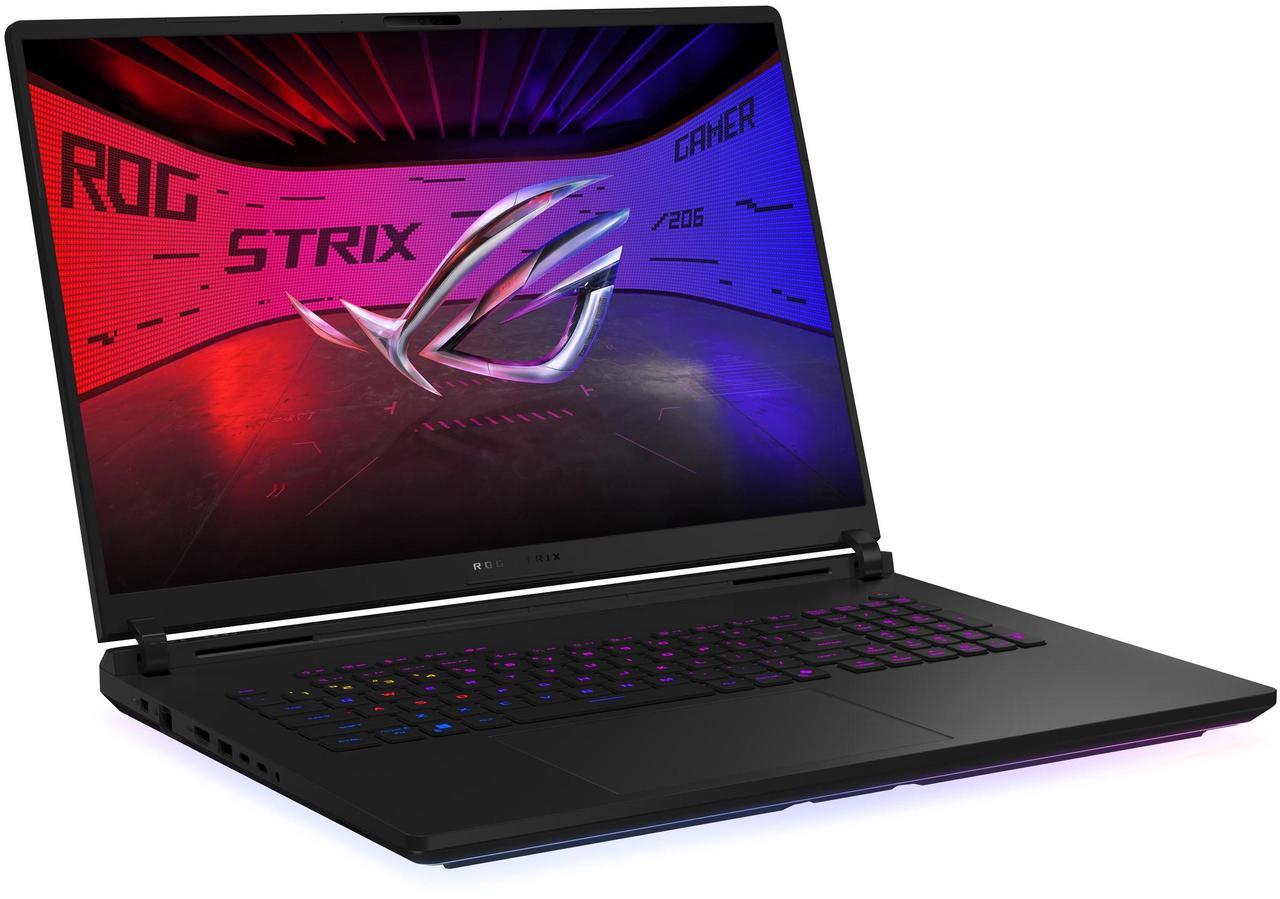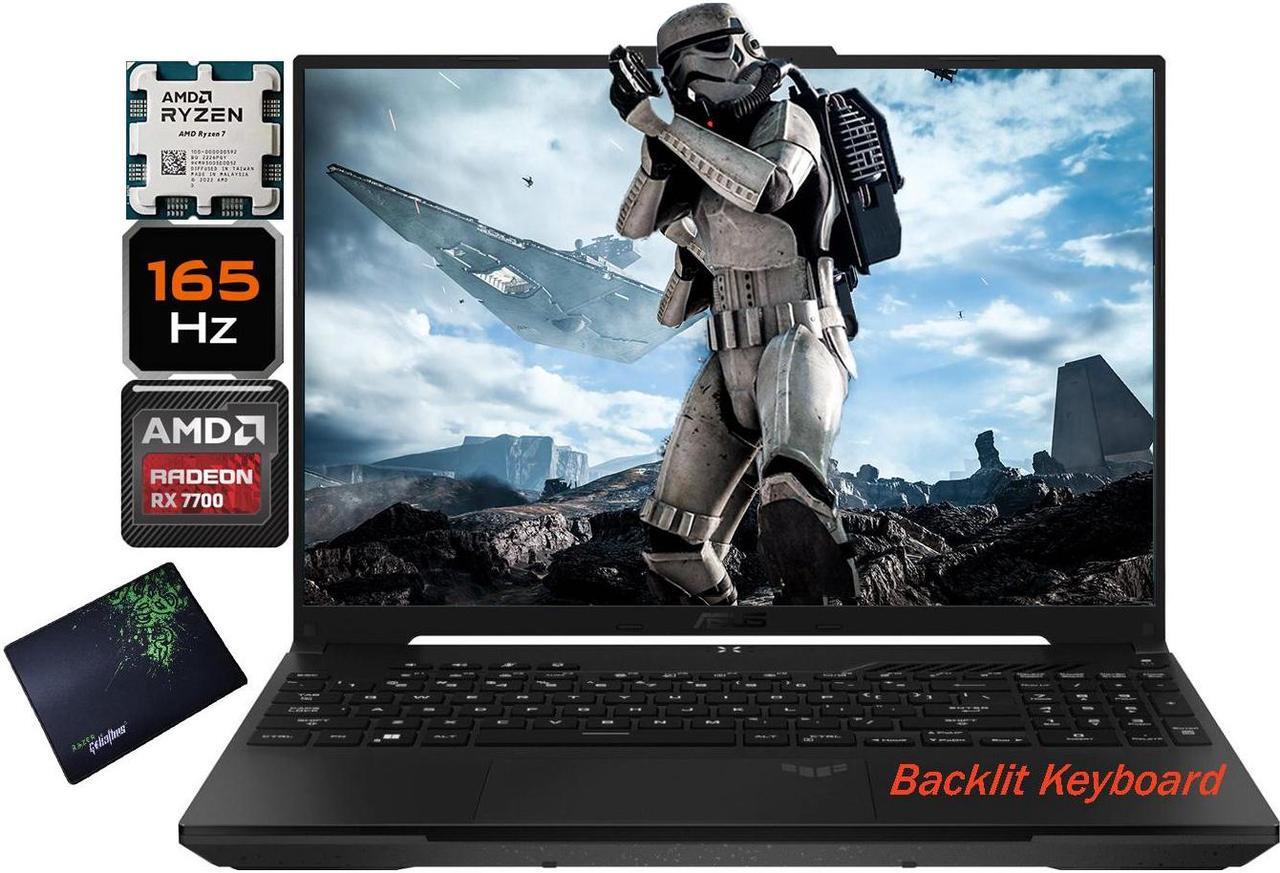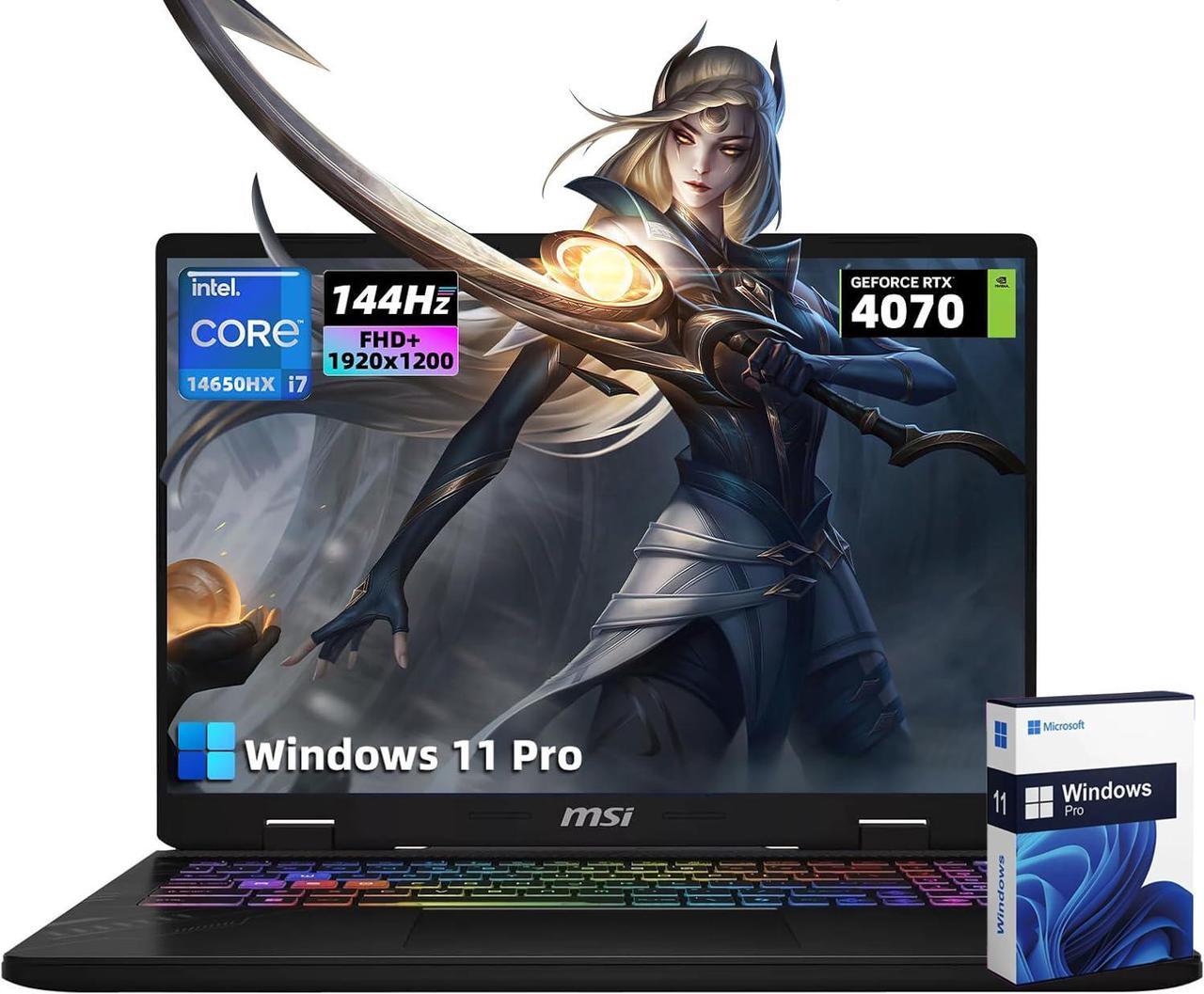
In 2025, gaming laptops deliver desktop-class performance in sleek, portable designs—but with countless models on Newegg and beyond, picking the right one can feel overwhelming. This guide draws on expert insights and real-world benchmarks to walk you through key factors—GPU, CPU, display quality, cooling, battery life, and upgrade paths—and highlights standout options at every price point.
1. Know Your Playstyle
First, define how you’ll use your laptop:
- Competitive Shooters (Valorant, CS:GO, Fortnite)
Prioritize ultra-high refresh rates (144 Hz–360 Hz) and minimal input lag. A mid-range GPU plus a 6- to 8-core CPU can easily push 200+ fps.

ASUS TUF Gaming A16 16″ 165Hz WUXGA AMD Ryzen 7
- AAA Open-World Titles (Cyberpunk 2077, Elden Ring)
You’ll need a beefy GPU—like NVIDIA’s RTX 40/50 series or AMD’s RX 7000 mobile cards—with 8–16 GB of VRAM. A sharper 1440p or 4K panel brings these worlds to life.

MSI Crosshair 16″ FHD+ Gaming Laptop
- Hybrid Use (Streaming, Editing)
If you record or livestream gameplay, lean on an 8- to 12-core CPU (Intel Core Ultra 9/i9 or Ryzen 9), 32 GB of RAM, and a high-speed SSD to avoid stutters.
2. Core Components Matter
- Processor (CPU):
• Entry to Mid: 6–8 cores (Intel i5-13500H, Ryzen 7 7840HS) handle modern games well.
• High-End / Content Creation: 8–12 cores (Intel i7-13700H, Ryzen 9 7940HS) shine when multitasking or encoding video. - Graphics (GPU):
• 1080p High-Refresh: NVIDIA RTX 4050/4060 or AMD RX 7600M.
• 1440p+ / Ray Tracing: RTX 4070–4090 or AMD RX 7700M+.
• VRAM: 8 GB is the minimum; 12–16 GB future-proofs against next-gen textures. - Memory & Storage:
• RAM: 16 GB DDR5 in dual-channel is the sweet spot; 32 GB if you run virtual machines or heavy editors.
• SSD: PCIe 4.0/5.0 NVMe drives (512 GB–2 TB) deliver near-instant boots and game loads.
3. Display: Speed vs. Clarity
- Refresh Rate & Resolution:
• 1080p @ 240–360 Hz for esports.
• 1440p @ 165–240 Hz for a balance of sharpness and speed.
• 4K @ 120 Hz+ for cinematic visuals (requires flagship GPUs). - Panel Technology:
• IPS: Wide viewing angles, accurate colors.
• Mini-LED / OLED: Deep blacks and vibrant contrast—ideal for single-player immersion. - Color & Brightness:
Aim for ≥100% sRGB and 300+ nits if you also do creative work.
4. Cooling & Chassis Design
- Thermal Solutions:
• Vapor chambers and liquid-metal thermal interfaces bring flagship cooling to mid-range.
• Multiple heat pipes and fans sustain high clocks longer. - Materials & Noise:
• Aluminum or magnesium-alloy shells dissipate heat better than plastic.
• Fan curves vary—some systems roar under load, while quieter designs may run slightly warmer. - Ergonomics:
A sturdy hinge, comfortable keyboard (≥1.5 mm travel), and responsive trackpad improve every task, gaming or otherwise.
5. Portability & Battery
- Size & Weight:
• 13–14″ ultraportables (<5 lbs) excel at mobility but limit cooling.
• 17″ “desktop replacements” (5–7 lbs) deliver better thermal headroom. - Battery Capacity:
• 70–100 Wh cells yield 5–8 hours of productivity use (web, video).
• Gaming drains battery by 50–70%—keep the charger handy. - Charging Options:
• Proprietary fast-charge (0→50% in ~30 min).
• USB-C Power Delivery for on-the-go top-ups via power banks.
6. Connectivity & Future-Proofing
- Ports:
• Thunderbolt 4/USB4 for docks and external GPUs.
• HDMI 2.1/Mini-DP for high-refresh external monitors.
• Multiple USB-A, Ethernet, and SD slots cover all peripherals. - Upgrade Path:
• User-accessible M.2 slots add storage.
• SODIMM slots let you boost RAM later—verify before you buy. - Network:
Wi-Fi 6E and 2.5 Gb Ethernet keep online play smooth, even on busy networks.
7. Budget Tiers & Quick Comparison
| Tier | GPU Tier | CPU Tier | RAM / Storage | Display | Use Case |
|---|---|---|---|---|---|
| Entry / Value | RTX 4050 / RX 7600M | i7 / Ryzen 7 | 16 GB / 512 GB SSD | 1080p @ 144 Hz | Casual / esports on a budget |
| Mid-Range | RTX 4060–4070 / RX 7600–7700M | i9 / Ryzen 9 | 16–32 GB / 1 TB SSD | 1440p @ 165–240 Hz | Balanced gaming & productivity |
| Premium / Flagship | RTX 4080–4090 / RX 7800M+ | Core Ultra 9 / Ryzen AI | 32 GB+ / 1–2 TB SSD | 2.5K–4K @ 120–240 Hz | AAA, ray tracing, content creation |
8. Top Picks for 2025
- Best All-Rounder: Razer Blade 16 – Ultraportable, high-end GPU, OLED option.
- Pure Performance: Lenovo Legion Pro 7i Gen 9 – Desktop-class cooling and benchmarks.
- Best Value: Lenovo Legion Pro 5i Gen 9 – Excellent mid-range performance per dollar.
- Budget Champ: Asus TUF A15 / Dell G16 – Solid specs without breaking the bank.
- Portability King: Asus ROG Zephyrus G14 – Light, compact, surprisingly powerful.


